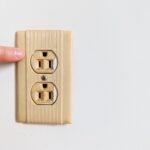The integrity of your plumbing system plays a critical role in ensuring a stable water supply, yet many homes and businesses still rely on outdated galvanized pipes that pose various risks. Replacing these corroded pipes is not just about upgrading—it’s about safeguarding your water quality and infrastructure from unnecessary future repairs.
- Corroded galvanized pipes can lead to reduced water quality and pressure, signaling the necessity for replacement.
- Visible signs like water discoloration and rust on pipes are your first warnings of corrosion needing attention.
- Discover step-by-step modern solutions utilizing materials like PEX or copper for replacing old pipes efficiently.
- Learn about contemporary piping materials designed to offer longevity and resistance to corrosion, surpassing traditional methods.
Delve into this guide to understand why modernizing your plumbing with durable materials is essential for an efficient and reliable water system. Stay ahead by maintaining these improvements to avoid future disruptions, ensuring your plumbing remains in prime condition with expert-backed strategies.
Understanding the Need: Why Replace Corroded Galvanized Pipes?
Galvanized pipes, once commonly used in plumbing systems, are prone to corrosion over time, leading to significant issues. One key problem arising from corroded galvanized pipes is the reduction in water quality. When these pipes corrode, they release rust and other particles into the water supply, causing it to become discolored and potentially unsafe for consumption.
Another critical issue is decreased water pressure. As corrosion builds up, it restricts water flow within the pipes, resulting in low water pressure that can affect both residential and commercial plumbing systems.
Moreover, corroded pipes can develop leaks, which pose a serious risk of water damage and mold growth. Leaks can occur without immediate detection, leading to costly repairs and health hazards over time. Therefore, replacing these outdated pipes is crucial to maintain a safe, efficient plumbing system.
Identifying Symptoms of Pipe Corrosion
Recognizing symptoms of pipe corrosion early is essential to prevent further deterioration and ensure timely replacement. One of the first signs to look for is the discoloration of water. If the water appears with a rusty or brownish tint, it indicates that the pipes are corroding from the inside.
Visible rust on the exterior of the pipes is another symptom that should not be ignored. Rust weakens the structural integrity of the pipes and eventually leads to leaks or breaks.
Inconsistent water flow, where water pressure fluctuates unexpectedly, can also signal pipe corrosion. This inconsistency can be particularly noticeable in older buildings where galvanized pipes were primarily installed. It’s essential to address these symptoms promptly to avoid further complications.
How to Replace Corroded Galvanized Pipes: Modern Plumbing Solutions
Replacing corroded galvanized pipes is essential for enhancing your home’s plumbing system. Transitioning to modern plumbing solutions like PEX or copper can make a significant difference. Follow these step-by-step instructions to ensure a smooth and efficient replacement process.
Step 1: Assess the Current Plumbing System
Before beginning, thoroughly evaluate the existing plumbing setup. Identify the extent of corrosion and any potential complications that may arise during the replacement. This assessment will guide you in planning the scale of your project.
Step 2: Selecting New Materials
Consider opting for popular alternatives like PEX tubing or copper pipes. Both materials offer advantages over traditional galvanized steel, including enhanced durability and resistance to future corrosion. Assess the specific needs of your plumbing system to choose the most suitable option.
Step 3: Gather Necessary Tools and Supplies
Ensure you have all the tools required for the job, such as pipe cutters, wrenches, and the necessary fittings for PEX or copper. Having everything ready before initiation minimizes interruptions during the replacement.
Step 4: Remove Old Galvanized Pipes
Carefully cut and remove the old pipes. It’s crucial to handle this process with caution to avoid unnecessary damage to other parts of the plumbing system. Consider marking the pipes to be replaced to facilitate a more organized approach.
Step 5: Install New Pipes
Replace the removed galvanized pipes with your chosen modern materials. Ensure all connections are secure and properly sealed to prevent leaks. Follow manufacturer instructions for installing PEX or copper pipes.
Step 6: Test the New System
After installation, it is advisable to test the new plumbing setup thoroughly for leaks or irregular water flow. Ensure everything is functioning correctly before wrapping up the project.
Selecting the Right Modern Plumbing Solutions
When replacing galvanized steel pipes, choosing the right modern plumbing solutions is key for long-term performance and reliability. Materials like PEX and copper offer distinct benefits and are favored in contemporary plumbing systems.
PEX: Flexible and Cost-Effective
Cross-linked polyethylene (PEX) piping is a highly versatile option known for its flexibility and ease of installation. PEX is typically more affordable than copper and adapts well to various plumbing configurations without the need for extensive fittings.
Due to its flexibility, the installation process is quicker, leading to reduced labor costs. In addition, PEX stands out for its resistance to scale and chlorine, making it a durable choice for residential applications.
Copper: Durable and Reliable
Copper pipes have been a mainstay in plumbing for decades. They are renowned for their strength and longevity, with an impressive resistance to ultraviolet exposure, making them suitable for outdoor use.
While copper is more expensive than PEX, its durability often justifies the initial investment. It offers a dependable choice that can withstand high temperatures and pressure, ensuring minimal maintenance.
Ultimately, the choice between PEX and copper depends on your specific plumbing needs and budget considerations. Both materials offer excellent performance, markedly improving upon outdated galvanized steel.
Maintaining Your New Plumbing System
Ensuring the longevity and efficiency of your new plumbing installation is crucial. Modern plumbing solutions like PEX and copper are designed for durability, but proactive maintenance significantly extends their lifespan. By adopting a few strategic practices, you can prevent corrosion and maintain your plumbing system in excellent condition.
Regular Inspections: Conducting routine inspections is essential for identifying potential issues before they escalate. Check for leaks, water pressure changes, and any unusual noises in your piping. Early detection of problems can save you from costly repairs in the future.
Water Quality Checks: The quality of water running through your pipes plays a vital role in preventing corrosion. Test your water regularly for acidity and hardness levels. Excessive minerals or low pH levels can accelerate pipe deterioration. Consider installing a water softener or a filtration system if needed to maintain optimal water quality and protect your plumbing.
Timely Repairs: Address any leaks or minor issues immediately. Ignoring small problems can lead to more significant damage. If you notice rust-colored water or reduced water pressure, investigate the source promptly and make necessary repairs to avoid exacerbating the situation.
Incorporating these maintenance practices into your routine ensures that your new plumbing system remains efficient and reliable. Stay proactive in monitoring its condition to prevent corrosion and ensure a consistent water supply. For the best results, consult a plumbing professional periodically to assess your system’s performance and receive expert advice tailored to your specific needs.
Frequently Asked Questions About Galvanized Pipe Replacement
What problems do corroded galvanized pipes cause?
- Reduced water quality
- Decreased water pressure
- Potential leaks
How can I tell if my pipes are corroded?
- Discolored water
- Visible rust on pipes
- Inconsistent water flow
What materials should I use to replace galvanized pipes?
Consider PEX or copper for their longevity and resistance to corrosion.
Is it necessary to hire a professional for pipe replacement?
Professional consultation ensures safety and quality of installation.
How do I maintain my new plumbing system?
- Regular inspections
- Water quality checks
- Timely repairs





